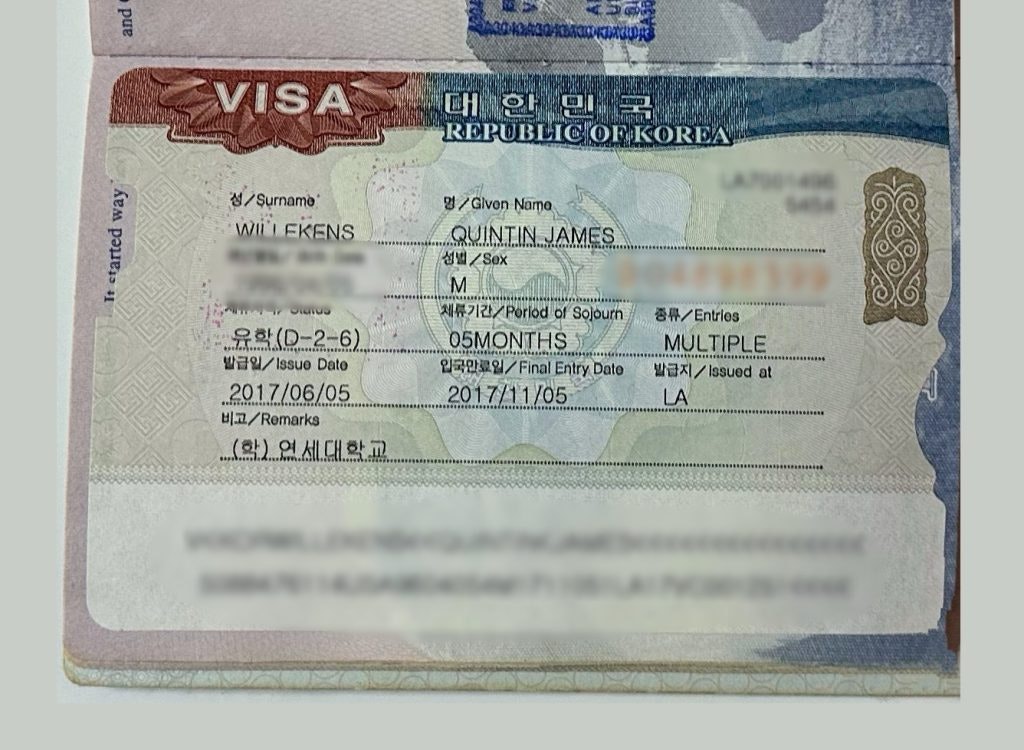







For globetrotters, collecting visa stamps is a badge of honor. Each stamp represents a new adventure and a new story. Those stamps can fill up your passport visa pages quickly, and you might find yourself needing to get a passport in under 2 weeks.
Avoid uncertainty with our guide to blank visa page requirements for international travel. Let’s explore what visa pages are, their importance, and the specific requirements for each country across the globe.
Visa pages in a passport are designated for stamps from entry and exit points as well as for visas issued by various countries. These pages fill up quickly, especially for frequent travelers. Having enough blank visa pages is crucial because you might run out of space well before your passport’s expiration date.

A visa to South Korea occupies a full page, and frequent trips to multiple countries can quickly consume the available space.
Tip: Some countries may deny entry when your passport contains stamps from specific nations. For example, when you have a stamp or visa from Israel, you might not be allowed entry to Lebanon. It’s important to be aware of these restrictions when planning your travels.
When traveling internationally, most countries require passport holders to have at least one blank visa page in your passport. However, some countries might require two blank pages or more. Out of 199 countries, 152 require only one page, 43 require two or three pages and four have no specified requirements.
Blank visa pages are essential for two main reasons:
How many pages you need is dependent on the country and its important to always have enough room for all of the passport stamps you might need for upcoming travel. Passport renewals can take two to eight weeks, so planning ahead is essential.
Learn more about the U.S. Passport Application Process.
When applying for a U.S. passport, you can choose between two sizes offering a different number of passport pages:
Since 2016, you can no longer add pages to a U.S. passport. When no need extra pages, you must renew and get a new passport. Since the passport fee is the same for both sizes, frequent travelers typically choose the large book with 20 additional pages.
Different countries have different requirements for the number of blank pages you need. Here’s a detailed breakdown of these requirements by country:
| Country | Blank Visa Pages |
|---|
All visa page requirements are based on the latest information from the U.S. Department of State International Travel Information.
Guide to Renewing Your U.S. Passport with the New Online System
Passport Price Comparison: Which Are the Most Expensive?
How to Handle U.S. Passport Renewal While Abroad
Tips and Guidelines for Passport Photos
Tips for Dealing with a Lost Passport Abroad